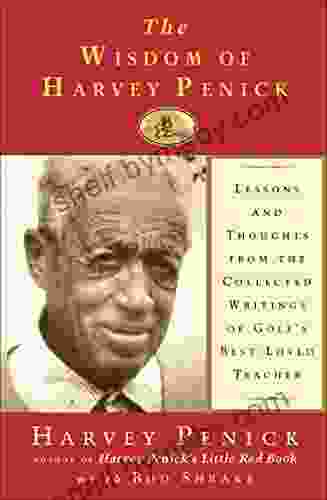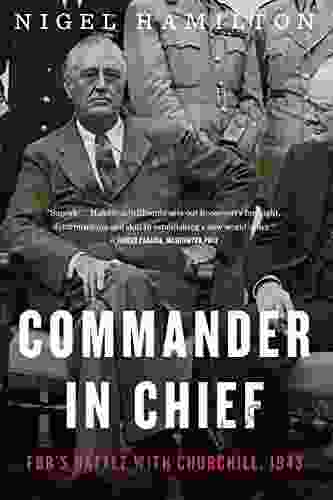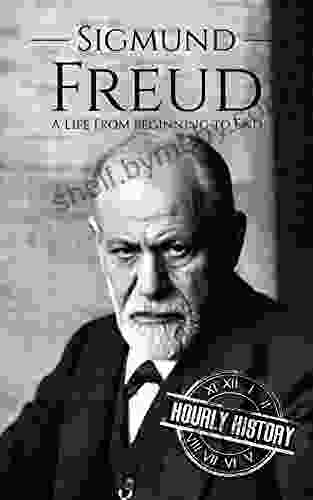FDR's Battle with Churchill: FDR at War in 1943

In the annals of World War II, the alliance between Franklin D. Roosevelt and Winston Churchill stands as one of history's most iconic partnerships. Yet, beneath the surface of their shared determination to defeat the Axis powers, there simmered a complex and often contentious relationship. In 1943, the tensions between these two towering figures reached a boiling point, culminating in a pivotal showdown that would shape the course of the war.
The Grand Alliance Under Strain
As the war raged across Europe and the Pacific, the Grand Alliance between the United States, Great Britain, and the Soviet Union faced mounting challenges. Churchill, with his characteristic bulldog tenacity, pushed for an immediate invasion of mainland Europe. Roosevelt, however, favored a more cautious approach, advocating for a "Germany first" strategy that would prioritize the defeat of Nazi Germany over the Japanese Empire.
4.6 out of 5
| Language | : | English |
| File size | : | 35804 KB |
| Text-to-Speech | : | Enabled |
| Screen Reader | : | Supported |
| Enhanced typesetting | : | Enabled |
| X-Ray | : | Enabled |
| Word Wise | : | Enabled |
| Print length | : | 501 pages |
Beyond these strategic differences, personal animosities also played a role in the growing rift between the two leaders. Churchill's aristocratic background and flamboyant personality clashed with Roosevelt's pragmatic nature and populist instincts. Moreover, Roosevelt harbored a deep-seated distrust of Churchill's imperialist ambitions, while Churchill found Roosevelt's reliance on advisors and his penchant for diplomacy off-putting.
The Casablanca Conference
In January 1943, the leaders of the Grand Alliance met at the Casablanca Conference in Morocco to hammer out a unified strategy for the coming year. Churchill, his usual optimism undeterred by the string of setbacks in North Africa, once again pressed for an invasion of France. Roosevelt, however, remained steadfast in his belief that the Allies needed to secure their positions in the Mediterranean before launching such a risky undertaking.
The tense atmosphere at Casablanca reached its peak during a heated exchange between the two leaders. In private, Churchill lambasted Roosevelt for his lack of vision and determination. Roosevelt, in turn, accused Churchill of being too reckless and out of touch with reality.
Despite their differences, the two leaders managed to reach a compromise. They agreed to invade Sicily as a stepping stone to mainland Italy, while postponing the long-awaited D-Day invasion of France until 1944.
The Quebec Conference
In August 1943, the Allies met again at the Quebec Conference in Canada to finalize plans for the invasion of Italy. However, the underlying tensions between Roosevelt and Churchill resurfaced once more.
During a discussion about the postwar world Free Download, Churchill presented Roosevelt with a proposal for a British-dominated "sphere of influence" in Europe. Roosevelt, a staunch advocate for collective security, rejected the plan outright, insisting that all nations had the right to self-determination.
The Quebec Conference ended with little progress on the major issues facing the alliance. Roosevelt, exhausted by the constant bickering, began to question the value of the partnership with Churchill.
The Tehran Conference
In November 1943, the Grand Alliance held its most consequential meeting of the war at the Tehran Conference in Iran. With the tide of the war finally turning in favor of the Allies, Roosevelt and Churchill needed to coordinate a plan for the final push against Germany and Japan.
At the conference, Stalin, the leader of the Soviet Union, joined the two Western leaders. Despite their vastly different ideologies, the three men managed to reach an agreement on the broad outlines of the postwar world. They also committed to a coordinated invasion of France in the spring of 1944.
However, the Tehran Conference was not without its moments of tension. Roosevelt and Churchill once again clashed over the issue of British imperialism in the Mediterranean. Roosevelt also expressed his concerns about the Soviet Union's territorial ambitions in Eastern Europe.
Despite these differences, the Tehran Conference marked a turning point in the relationship between Roosevelt and Churchill. They had come to appreciate each other's strengths and weaknesses, and they were now united in their determination to achieve victory.
Aftermath
The alliance between Roosevelt and Churchill was put to the ultimate test in the months that followed the Tehran Conference. The D-Day invasion of France in June 1944 was a perilous undertaking that could have ended in disaster. However, the Allies, thanks in no small part to the close cooperation between Roosevelt and Churchill, achieved a remarkable victory.
In the aftermath of D-Day, the Grand Alliance continued to face challenges, but Roosevelt and Churchill's partnership held firm. They worked together to coordinate the Allied war effort, providing critical support to the Soviet Union on the Eastern Front and the Pacific campaign against Japan.
Roosevelt passed away in April 1945, just weeks before the end of the war. Churchill, devastated by the loss of his friend and ally, delivered a moving tribute at his funeral.
The relationship between Franklin D. Roosevelt and Winston Churchill was a complex and often tumultuous one. Yet, despite their differences, they formed one of history's most enduring partnerships. Their ability to overcome adversity and work together to achieve victory stands as a testament to the power of human diplomacy and the indomitable spirit of the human heart.
Additional Information
If you are interested in learning more about the relationship between Franklin D. Roosevelt and Winston Churchill, I highly recommend the following resources:
* "His Finest Hour: Winston Churchill, 1939-1941" by John Lukacs * "FDR and the Making of Modern America" by Robert Dallek * "The Grand Alliance: America and Britain in World War II" by Winston Churchill
4.6 out of 5
| Language | : | English |
| File size | : | 35804 KB |
| Text-to-Speech | : | Enabled |
| Screen Reader | : | Supported |
| Enhanced typesetting | : | Enabled |
| X-Ray | : | Enabled |
| Word Wise | : | Enabled |
| Print length | : | 501 pages |
Do you want to contribute by writing guest posts on this blog?
Please contact us and send us a resume of previous articles that you have written.
 Book
Book Novel
Novel Page
Page Chapter
Chapter Text
Text Story
Story Genre
Genre Reader
Reader Library
Library Paperback
Paperback E-book
E-book Magazine
Magazine Newspaper
Newspaper Paragraph
Paragraph Sentence
Sentence Bookmark
Bookmark Shelf
Shelf Glossary
Glossary Bibliography
Bibliography Foreword
Foreword Preface
Preface Synopsis
Synopsis Annotation
Annotation Footnote
Footnote Manuscript
Manuscript Scroll
Scroll Codex
Codex Tome
Tome Bestseller
Bestseller Classics
Classics Library card
Library card Narrative
Narrative Biography
Biography Autobiography
Autobiography Memoir
Memoir Reference
Reference Encyclopedia
Encyclopedia Helen Keller
Helen Keller R Taggart Murphy
R Taggart Murphy Jeff Halper
Jeff Halper Helena Clare
Helena Clare Huguette Conilh
Huguette Conilh Ken Forkish
Ken Forkish Herb Wharton
Herb Wharton Hildegarde Mahoney
Hildegarde Mahoney Simon Robinson
Simon Robinson Haytham Al Fiqi
Haytham Al Fiqi Helen Hodgson
Helen Hodgson Hermione Lee
Hermione Lee Henry George
Henry George Shane Benzie
Shane Benzie Heather Davis
Heather Davis Peggy J Martin
Peggy J Martin Learning Through Activities
Learning Through Activities Helen Thorpe
Helen Thorpe Peter Howson
Peter Howson Tina Dreffin
Tina Dreffin
Light bulbAdvertise smarter! Our strategic ad space ensures maximum exposure. Reserve your spot today!

 Eric HayesDiscover Maine's Enchanting Coastlines and Rugged Wilderness with Moon Maine...
Eric HayesDiscover Maine's Enchanting Coastlines and Rugged Wilderness with Moon Maine...
 Reginald CoxDiscover the Timeless Wisdom of Golf's Beloved Mentor: A Comprehensive Review...
Reginald CoxDiscover the Timeless Wisdom of Golf's Beloved Mentor: A Comprehensive Review... Peter CarterFollow ·14.6k
Peter CarterFollow ·14.6k Sammy PowellFollow ·6.7k
Sammy PowellFollow ·6.7k Eric HayesFollow ·11.9k
Eric HayesFollow ·11.9k Art MitchellFollow ·15.3k
Art MitchellFollow ·15.3k Esteban CoxFollow ·5k
Esteban CoxFollow ·5k Israel BellFollow ·17.5k
Israel BellFollow ·17.5k Jermaine PowellFollow ·3.6k
Jermaine PowellFollow ·3.6k Cody RussellFollow ·3.1k
Cody RussellFollow ·3.1k

 Bo Cox
Bo CoxUncover the Enchanting Pearl of the Arabian Gulf: Insight...
Escape to the opulent...

 Michael Crichton
Michael CrichtonInsight Guides Pocket Baku Travel Guide Ebook: Your...
An Enchanting Journey...

 Eugene Scott
Eugene ScottLearn to Paint Scenic Scenes: Unveil the Secrets of...
Step into the...

 Benji Powell
Benji PowellEmbark on a Culinary Adventure with "The Ultimate Sichuan...
Sichuan cuisine,...

 Finn Cox
Finn CoxDiscover the Enchanting World of Art Nouveau: A...
Immerse yourself in the captivating beauty...

 Corey Green
Corey GreenUncover the Vibrant World of Guatemalan Chicken Buses: An...
Step into a world of vibrant colors,...
4.6 out of 5
| Language | : | English |
| File size | : | 35804 KB |
| Text-to-Speech | : | Enabled |
| Screen Reader | : | Supported |
| Enhanced typesetting | : | Enabled |
| X-Ray | : | Enabled |
| Word Wise | : | Enabled |
| Print length | : | 501 pages |








